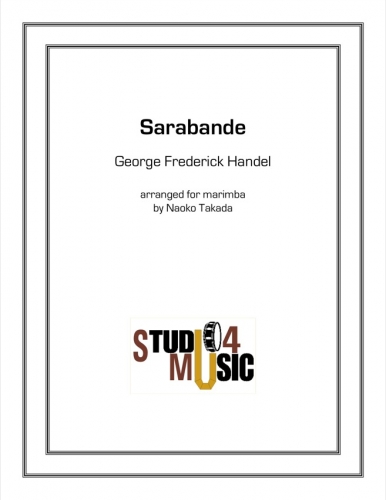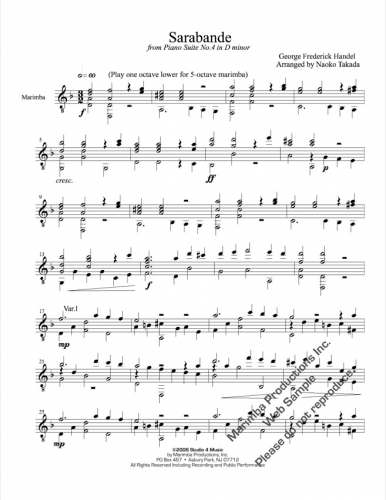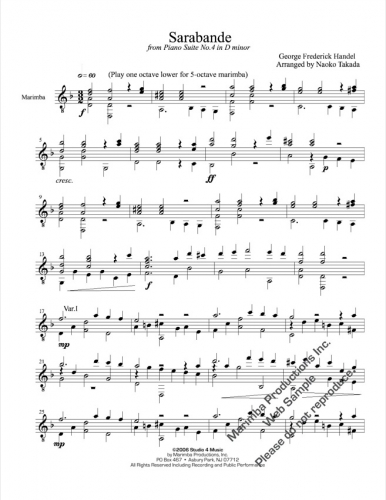Composed by Handel, arranged for marimba by Naoko Takada
Siciliano (J.S. Bach/arr. Naoko Takada)
$10.00 – $11.00Composed by J.S. Bach, transcribed for marimba by Naoko Takada
Composed by J.S. Bach, transcribed for marimba by Naoko Takada
$8.00 – $9.00
Composed by Handel, arranged for marimba by Naoko Takada
Composed by J.S. Bach, transcribed for marimba by Naoko Takada
Composed by J.S. Bach, transcribed for marimba by Naoko Takada
J.S. Bach’s Prelude in C (from “The Well-Tempered Clavichord”), arranged for marimba by Naoko Takada.
J.S. Bach’s Prelude in C (from “The Well-Tempered Clavichord”), arranged for marimba by Naoko Takada.
Arranged for 5.0 marimba by Naoko Takada.
Arranged for 5.0 marimba by Naoko Takada.
Composed by Carl Philipp Emanuel Bach, transcribed for marimba by Naoko Takada
Composed by Carl Philipp Emanuel Bach, transcribed for marimba by Naoko Takada
Composed by Mozart, arranged for marimba duet by Naoko Takada
Composed by Mozart, arranged for marimba duet by Naoko Takada
Composed by Handel, arranged for marimba by Naoko Takada
| Difficulty | Advanced |
|---|---|
| Performance Type | Arrangement/Transcription |
| Delivery Method | Print Copy, PDF Download, Print & PDF Versions |
An excellent collection of keyboard, timpani, snare drum and multi-perc solos suitable for college auditions.
An excellent collection of keyboard, timpani, snare drum and multi-perc solos suitable for college auditions.
A 4.3 marimba solo inspired by the Grateful Dead.
A 4.3 marimba solo inspired by the Grateful Dead.
An intermediate solo marimba piece, reminiscent of a summer sunset in the country.
An intermediate solo marimba piece, reminiscent of a summer sunset in the country.
Written for Leigh Howard Stevens and She-e Wu, this jazzy piece requires two advanced players and two 5.0 octave instruments. A “must play” if you have a friend ready and willing to take on the challenge with you.
Written for Leigh Howard Stevens and She-e Wu, this jazzy piece requires two advanced players and two 5.0 octave instruments. A “must play” if you have a friend ready and willing to take on the challenge with you.
Inspired by Tyson’s rafting adventure with John Parks on the Boise River. This piece depicts the beauty, excitement, and occasional feeling of losing control that they experienced in the raft that day.
Inspired by Tyson’s rafting adventure with John Parks on the Boise River. This piece depicts the beauty, excitement, and occasional feeling of losing control that they experienced in the raft that day.
This outstanding etude book emphasizes the equalization of the two hands via musically interesting compositions.
This outstanding etude book emphasizes the equalization of the two hands via musically interesting compositions.
It is with the virtuosic percussionist in mind that Contemporary Collection for Snare Drum was composed.
It is with the virtuosic percussionist in mind that Contemporary Collection for Snare Drum was composed.



